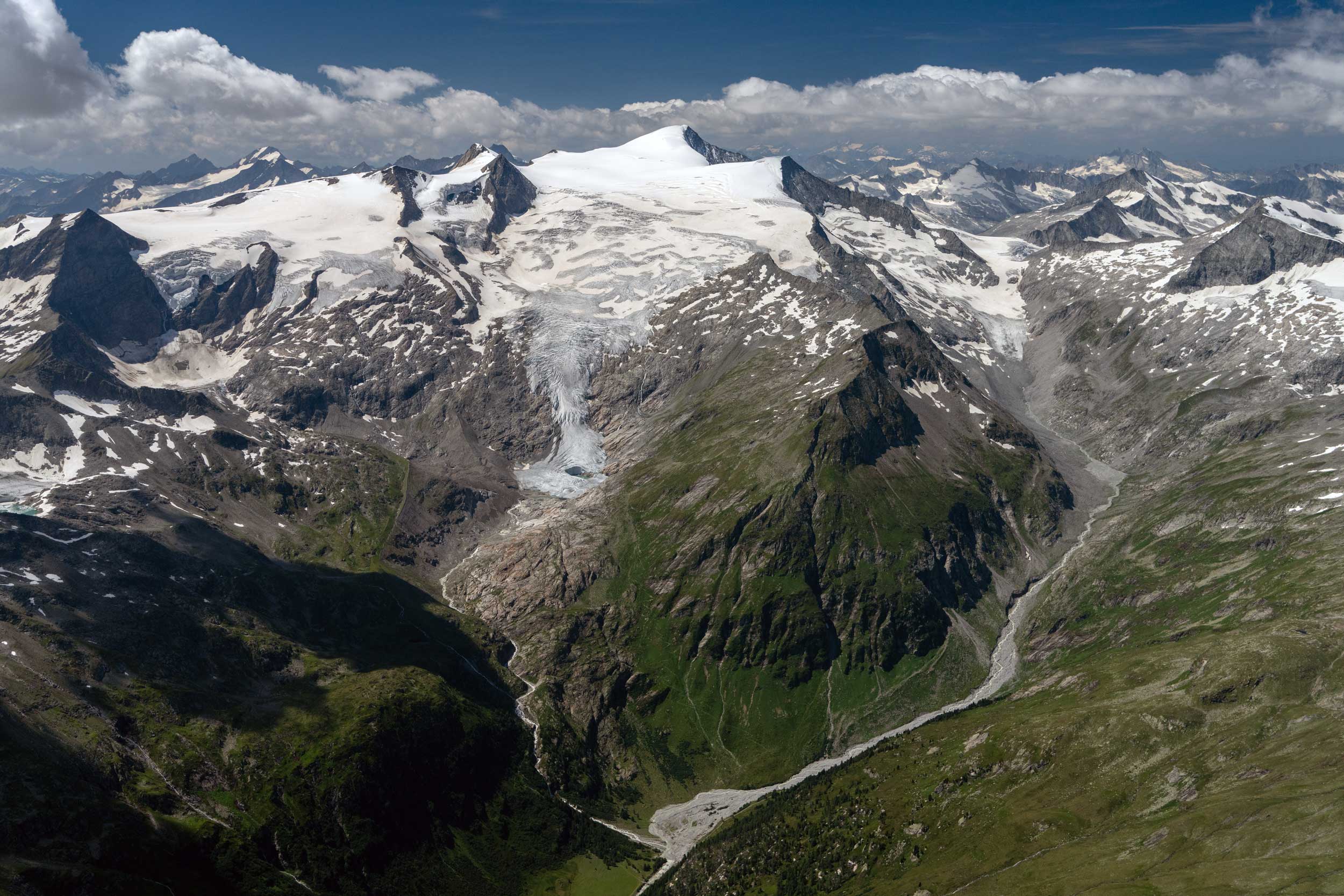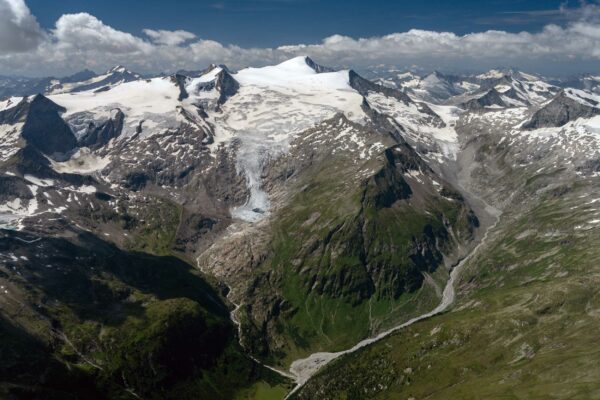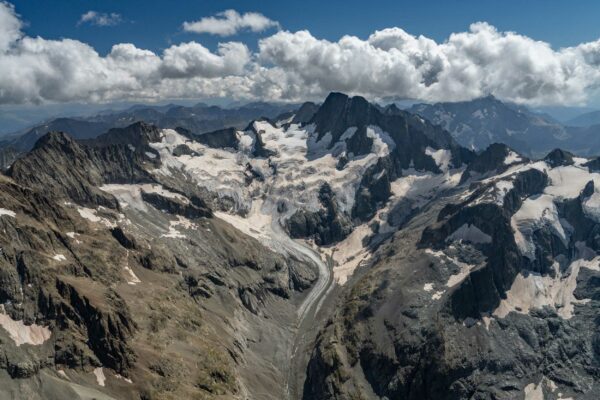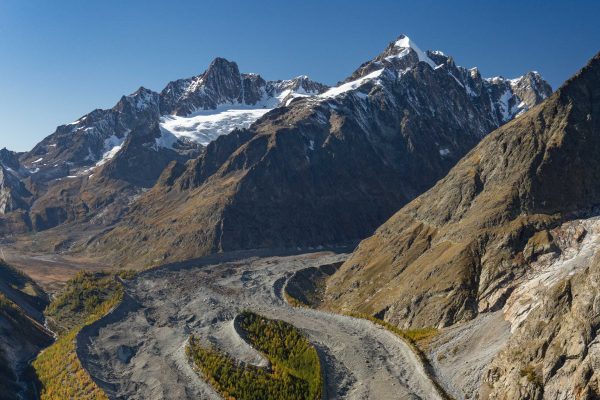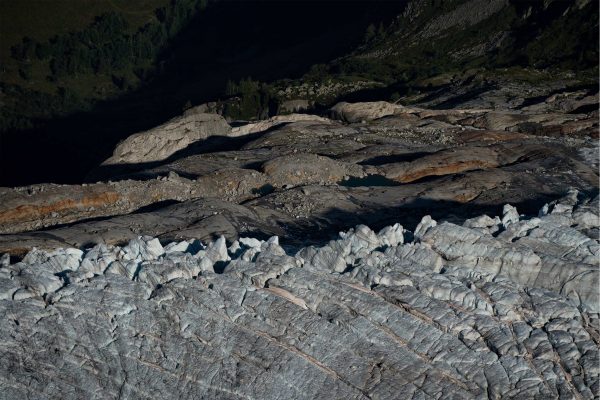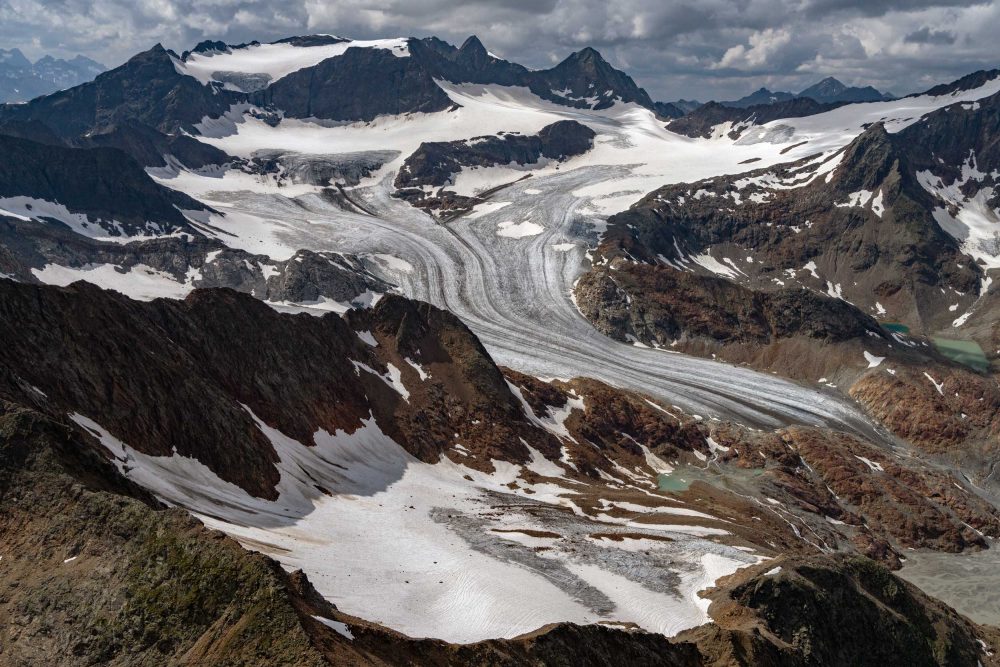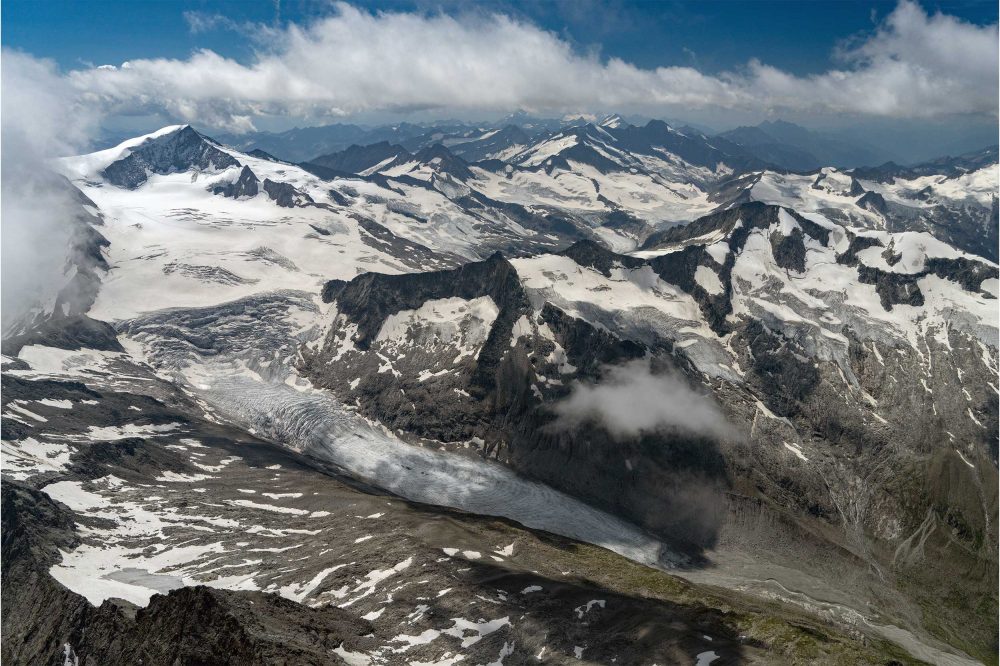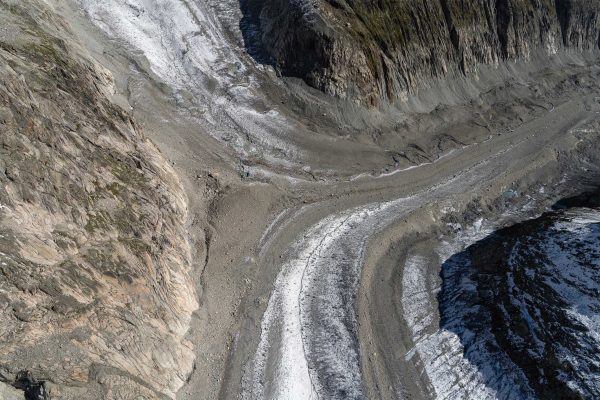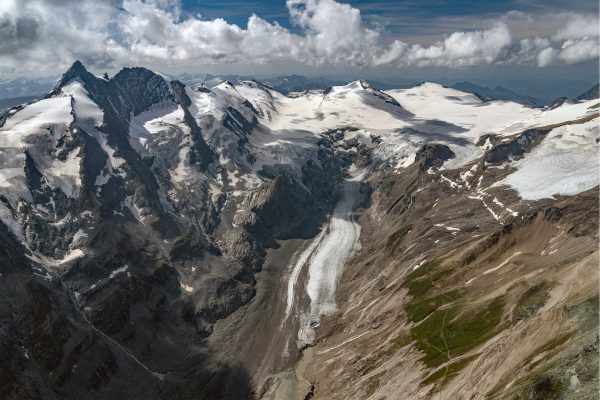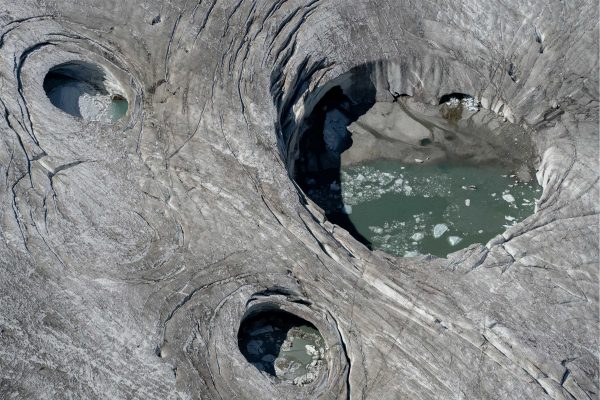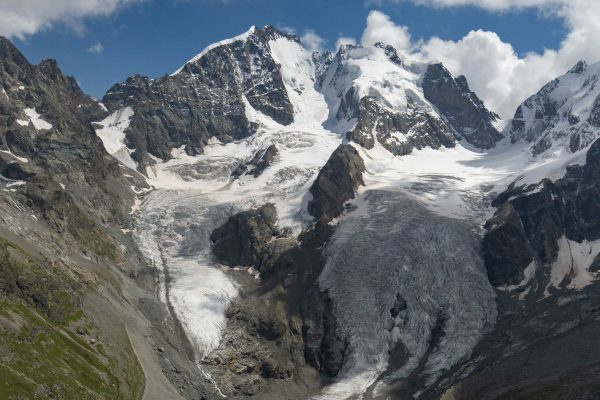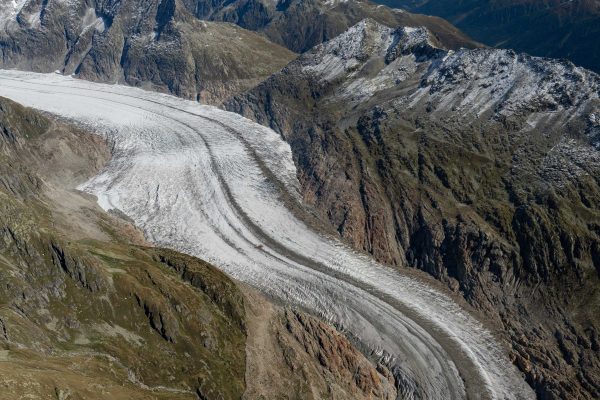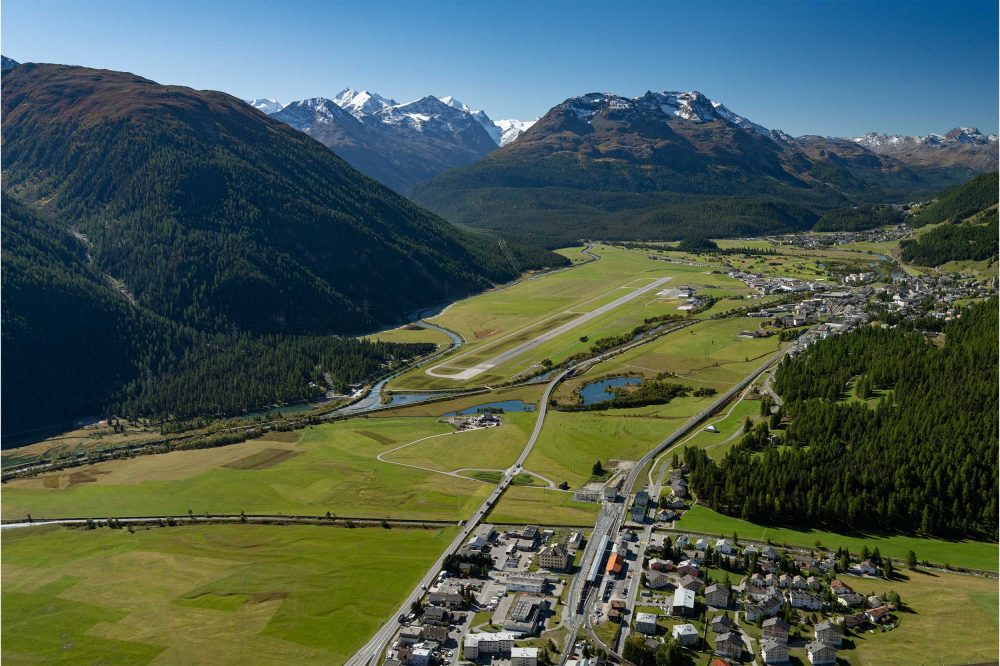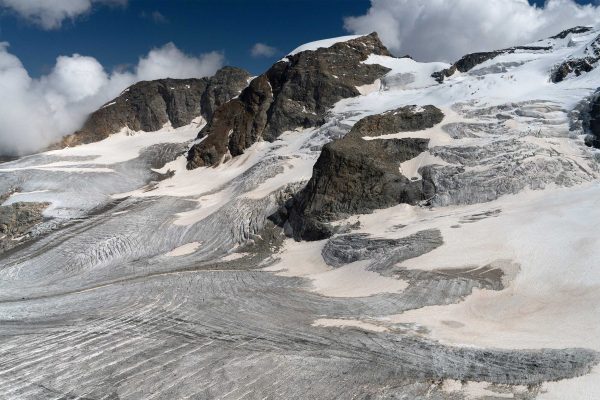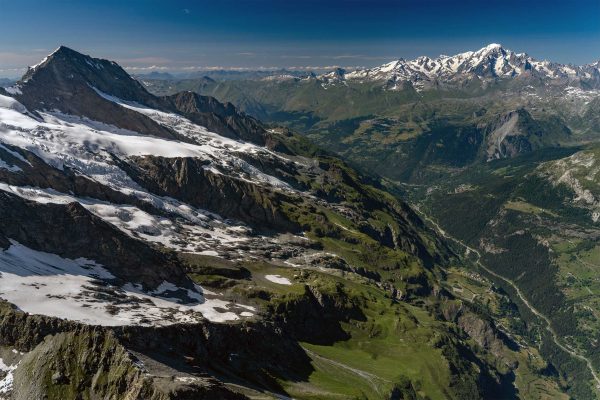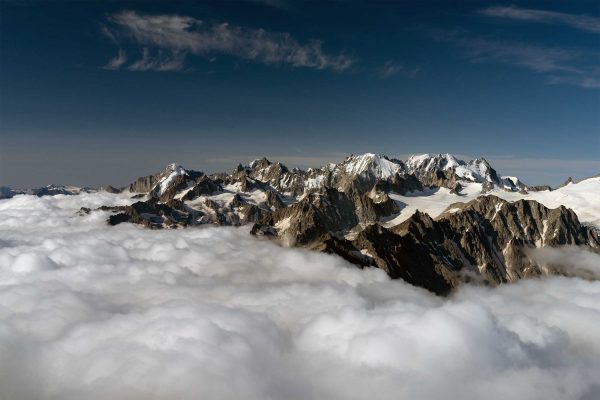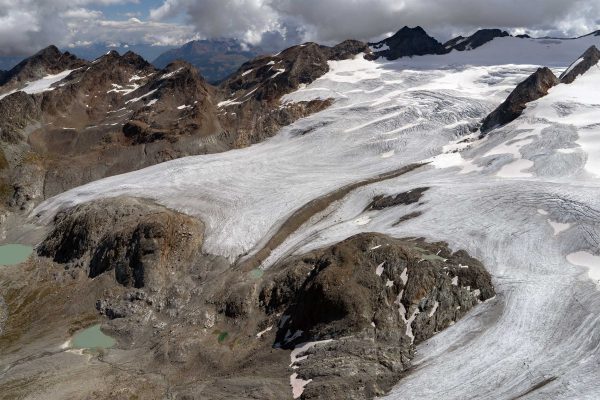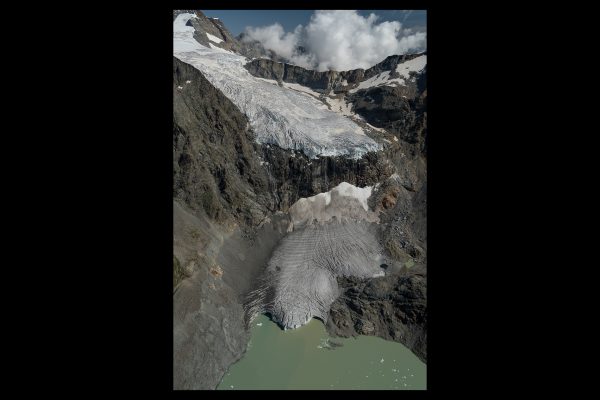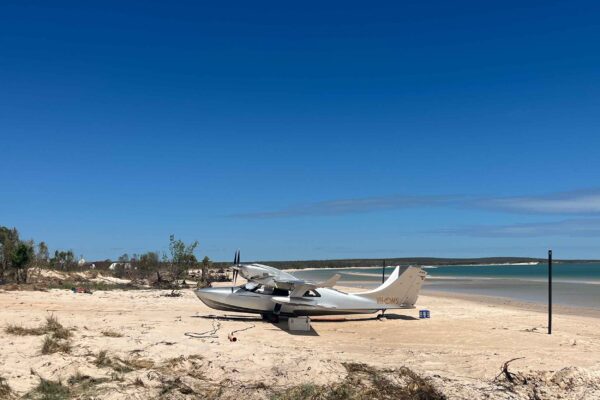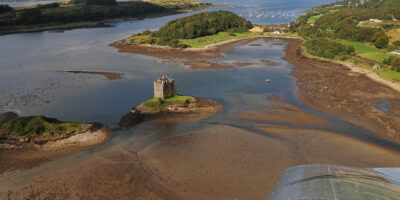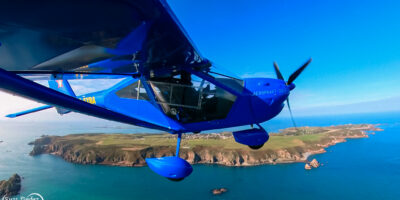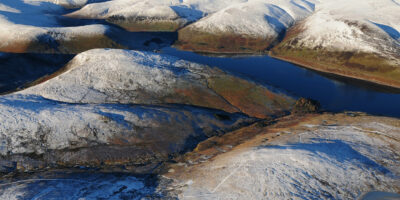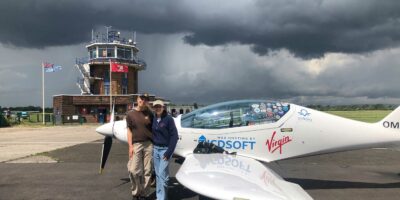It was quite gruelling, with more glaciers than I expected, lots of turbulence, and not enough fuel. I completed half of what I expected before landing in Innsbruck, Austria, for fuel, 10,500ft below. While I was painfully cold in the cockpit, it was 29°C on the ground. After a 45-minute climb, I was back up into the Alps, freezing cold and getting beaten up by the wind, for another three-hour photography binge. Back down to Innsbruck, up again to the few glaciers around the Zugspitze in Germany, and back to Innsbruck for the night. At this point, my backside hurt so much from the bumps and uncomfortable Cub seat, so a final large pothole on the taxi-ride back to the hotel had me thinking I might need a proctologist…
The next day, it was a three-hour session getting half of the glaciers of the Höhe Tauern National Park in Austria, which contains the highest peaks in the country. The glaciers have nice coverage, though there is a rather strict zone where one must maintain 2,000ft agl, though it allows for some valley areas that work. The problem was that 2,000ft agl over most lower ridges was the altitude of the cumulus clouds, which made for some immensely difficult flying, photography, and calculations.
Small glaciers
Down to Zell am See, 10,000ft below, and back up again for the eastern half of the park and back down for more fuel. I had to fly back to Innsbruck due to hotel availability, so I sideswiped a few more glaciers on the way. The next morning, I had to return east as I ran out of opening hours the day before to get the few small glaciers farthest east in the Alps. I also needed to get a few in Berchtesgaden, Germany, where at that moment, the only thunderstorm in Central Europe was sitting. By the time I got there, it had moved on, so I was able to photograph some glaciers in lingering light rain, which was a first. Eastward I went to get the farthest one, then down to Zell am See for fuel.
Annoyingly, headwinds, plus a closed airport in western Austria, meant that I had to land at Innsbruck again, roughly an hour away for fuel, which messed up the chance to get back to base. I decided to make the best of it, pick off a few glaciers in western Austria, and overnighted in St. Gallen, Switzerland. By the time I got back the next day, it had been 23 hours on the tach in four days which, in Europe, is much more complicated than flying the same number of hours in the US. I was extremely tired.


